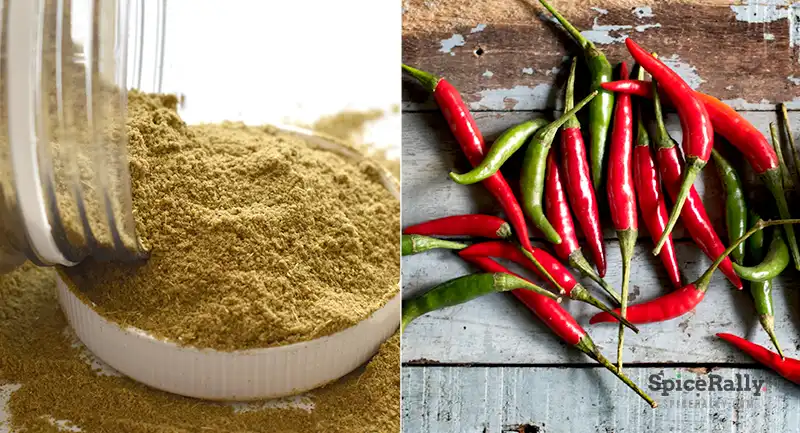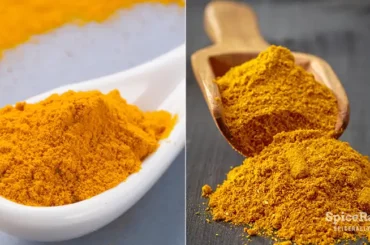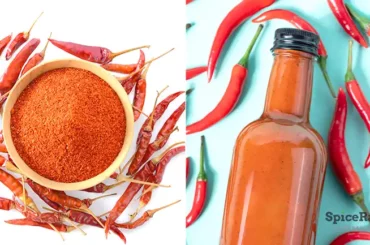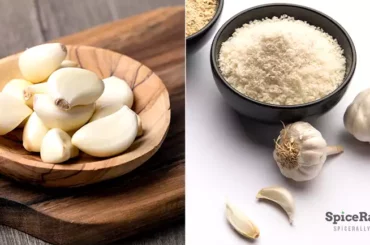Some spices are not easily confused, yet we tend to think about what makes them really different. Hence, we thought of sharing some vital facts about cumin vs cayenne that you should know before using them.
Cumin adds an earthy, warm, nutty, and slightly sweet hint to our dishes, while cayenne offers a similar earthiness but with much spicier and hotter notes. They have very distinctive properties along with appearance, usage in cooking, etc.
So, here’s a complete guide that explains all the differences and similarities between these kitchen staples. Keep reading for more information!
| Cumin | Cayenne | |
|---|---|---|
| Flavor profile | Has a stronger flavor than cayenne pepper with earthy, warm, nutty, and slightly sweet, citrusy notes. | Has a more neutral flavor than cumin with a spicier bite. It is earthy with a fruity hint. |
| Aroma profile | Extremely aromatic with a woody, pleasant, herbal, minty, and floral undertone. | Not as fragrant as cumin. Has a neutral, peppery, spicy, and warm odor. |
| Heat Level | Not at all hot | Hotter than cumin, scoring 30,000 – 50,000 SHU in the Scoville Heat Scale |
| Appearance | – Whole cumin seeds are tiny, elongated, and yellowish-brown. – Ground cumin is light brown in color. | – Cayenne peppers are typically long, skinny, and red or green in color. – Cayenne pepper powder ranges from light red to deep brown or deep red. |
| Forms used and availability | – Whole cumin seeds – Ground cumin – Cumin capsules – Cumin essential oil – Cumin-infused tea | – Fresh whole cayenne peppers – Dried whole cayenne pepper – Cayenne pepper powder – Dried cayenne pepper flakes – As capsules – Cayenne extract oil |
| Purpose in cooking | As an ingredient | As an ingredient |
| Usage in cooking | – As a tempering spice in most savory dishes. – As a healthy beverage and to infuse with herbal tea. – As an integral ingredient in dry rubs, wet rubs, marinades, spice blends, and seasonings. – To incorporate into dips, sauces, and salad dressings. – To make certain types of bread, buns, and spiced cakes. Click here if you need to discover more interesting ways to use cumin in your household. | – To spice up chili – Widely used in many spice and seasoning blends – To make hot sauces and dips – Enhances the flavor and color of dishes like mac and cheese, scrambled eggs, enchiladas, etc. – To spice up roasted nuts and fries. |
| General use | – In cooking and baking – For home remedies as folk medicine – In modern pharmacology | – In cooking and baking – Used in modern pharmacology |
| Health benefits | – Works as an excellent carminative – Contains antioxidants and anti-inflammatory properties – Reduced bad cholesterol levels in the body. – Helps to ease the symptoms of Irritable Bowel Syndrome. – Aids in weight loss and obesity. | – Improves heart health – Improves digestion – Helps to maintain a healthy weight – Relieves pain – Have potential benefits in fighting against certain types of cancer |
| Scientific name | Cuminum cyminum | Capsicum annuum |
| Plant family | Apiaceae (parsley family) | Solanaceae (nightshade family) |
| Active compounds | Volatile oils (cuminaldehyde, cymene, terpenoids) | Capsaicin |
| Shelf life | – Both ground and whole cumin will stay well for up to 3-4 years. – But, ground cumin tends to lose its strength sooner than whole cumin seeds. | – Fresh cayenne pepper can stay outside for up to 5 days. And if refrigerated, they can stay well for up to 1 week. – Ground cayenne pepper powder will stay fresh for 3-4 years but will lose its potency over time. |

Elaborating On The Difference Between Cumin And Cayenne…
Cumin and cayenne have their own special way of spicing up our dishes, but there is no way they are the same. Despite the fact they belong to the same culinary ingredient category as spices, they possess very different characteristics, starting from their appearances, flavor profiles, aroma profiles, uses, etc.
Cayenne is actually a type of chili pepper that is often used as a powder in cooking savory dishes prevalent in South American, European, Mexican, and Asian cuisines.
Click on this link and refer to the post published here for more information on cumin.
On the other hand, cumin is a dried spice commonly used as whole seeds or in ground form in savory cooking, baked goods, desserts, and beverages dominant in Indian, Sri Lankan, Mexican, and African cuisines.
Both of these spices are jam-packed with health benefits, but cumin has been known to be an ingredient used since the olden days of Ayurveda. Cumin contains an active component known as cuminaldehyde, while cayenne contains capsaicin. They could affect differently in our bodies, helping to treat various ailments when consumed.
Can Cayenne Be Used In Place Of Cumin And Vice Versa?
Even though cayenne has a similar earthiness to cumin, there is no better possibility that we could use these two ingredients interchangeably. As explained in the table above, you can see that these two ingredients possess completely two different flavor profiles.
In fact, cayenne is spicier, hotter, and even has a vibrant color than cumin. In contrast, cumin itself is a highly aromatic spice with a distinctive, pleasant flavor that could instantly ramp up the taste of any dish. So, cumin cannot be a good substitute recommendation for cayenne and vice versa.




